Is your ranch ready for VFD in 2017?
With the VFD looming, BEEF’s survey of veterinary services and availability indicates that there are still holes yet to be plugged.
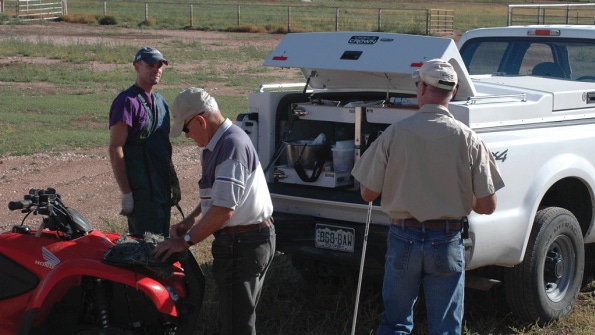
In just a few weeks, the veterinary feed directive (VFD) will become effective. That means when Jan. 1, 2017, rolls around, everyone in the cattle business will face a new and different landscape regarding the use of antibiotics in animal feed that are medically important for humans.
That changing landscape means if you don’t have a valid veterinary client-patient relationship with a veterinarian, you’re rapidly running out of time.
In a recent survey of BEEF readers as well as practicing bovine veterinarians, 55.7% of the 912 beef producers who responded say yes when we asked if they have such a relationship with their veterinarian, 25.7% say no and 18.6 don’t know (Figure 1).
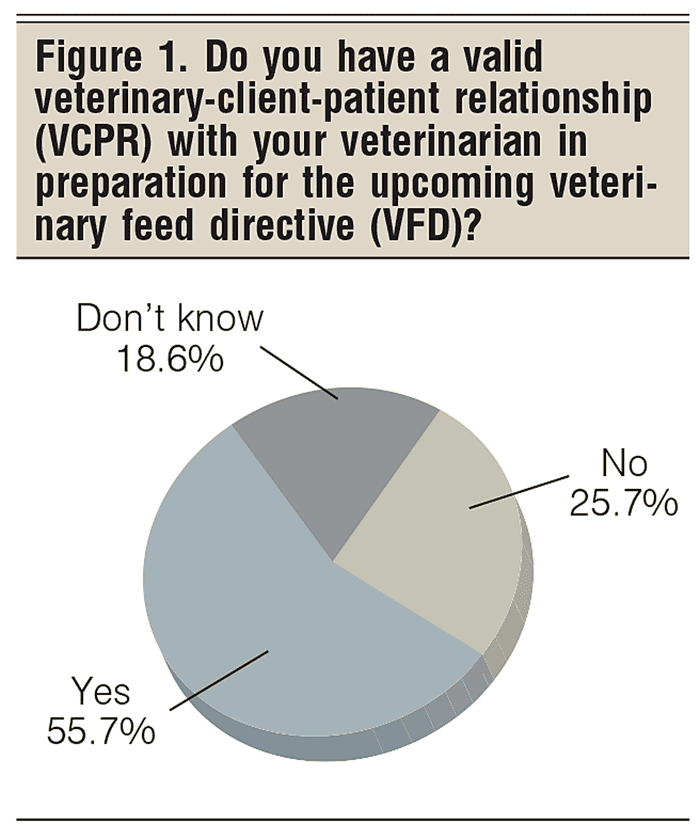
The other side of that equation, however, is the availability of veterinarians. The flight of veterinarians from rural practice to urban and suburban practice has long been a point of consternation with beef producers. If you need a veterinarian to sign a VFD so you can buy medicated mineral, but no veterinarian is available to visit your operation, that’s a problem.
Of the BEEF readers who rated the availability of large-animal veterinarians, 59.2% say it is adequate in their area. Beyond that, 21.7% say there is a slight or seasonal shortage, 13.7% see a significant shortage and 5.4% have a severe shortage (Figure 2).
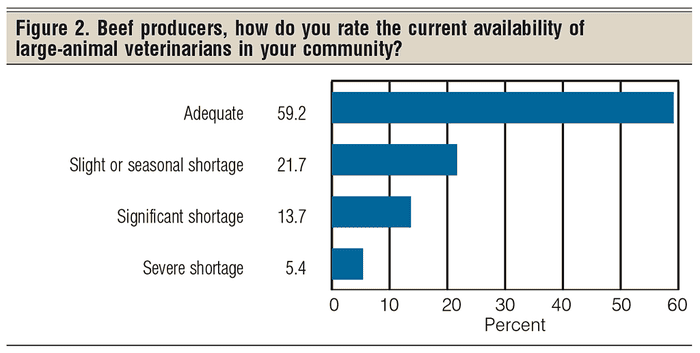
Looking ahead, when readers were asked if they are concerned about a future shortfall in the availability of large-animal veterinary services, 32.4% say not presently, but 34.9% had concerns about the long run. In the shorter term, 17% say they see a shortage looming and 15.8% say there is already a shortage of veterinary services in their area (Figure 4).
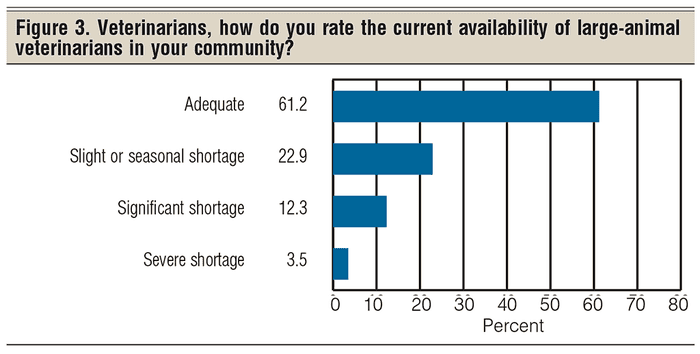
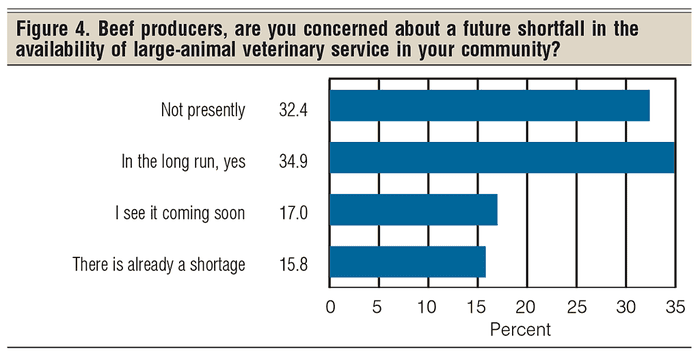
Veterinarians agree. Of the 229 bovine vets who responded to BEEF’s survey, 39.7% say they’re not presently concerned about a future shortfall of availability of large-animal veterinarians graduating from veterinary school. However, 26.6% say there could be a problem in the long run, 17.9% see it coming soon and 15.7% say there already is a shortage of large-animal vets coming out of the nation’s vet schools (Figure 5).
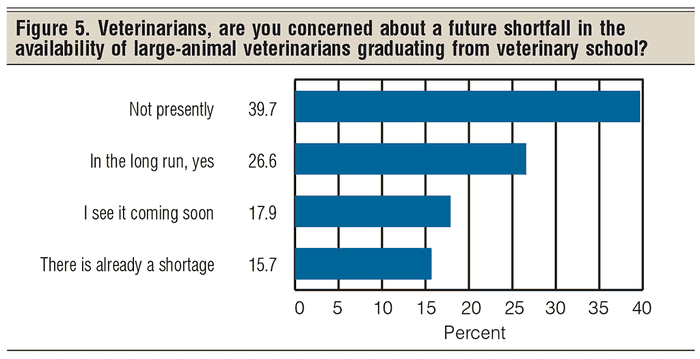
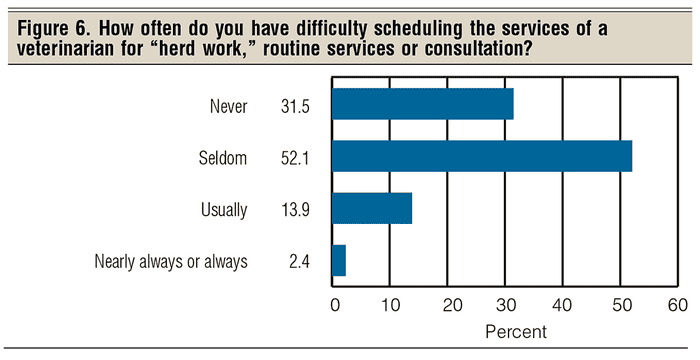
So does that translate into difficulty scheduling a veterinarian to visit your operation? Perhaps. When we asked readers how often they had difficulty scheduling a veterinarian for routine services or consultation, 52.1% say seldom and 31.5% say never. However, 13.9% say usually and 2.4% say nearly always or always (Figure 6).
Going back to the discussion about the VFD, what does this portend for life after Jan. 1, 2017? For the 16.3% of producers who have difficulty scheduling a veterinarian for routine visits to their operation, it could well mean obtaining medicated feed or mineral may be difficult.
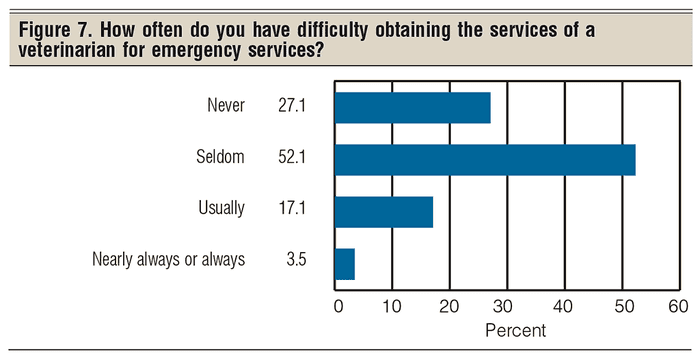
Likewise, when BEEF asked readers how often they have difficulty obtaining emergency veterinary services, 27.1% say never and 52.3% say seldom. However, 17.1% say usually and 3.5% say nearly always or always (Figure 7).
Digging deeper, BEEF asked readers how often a veterinarian visits them annually. Relative to the VFD discussion, 9.4% say never. Most producers, at 39.6%, see their vet once or twice a year; 30.9% have a vet on the place three to five times annually; 12.1% see their vet six to nine times and 8% see a vet 10 times or more (Figure 8).
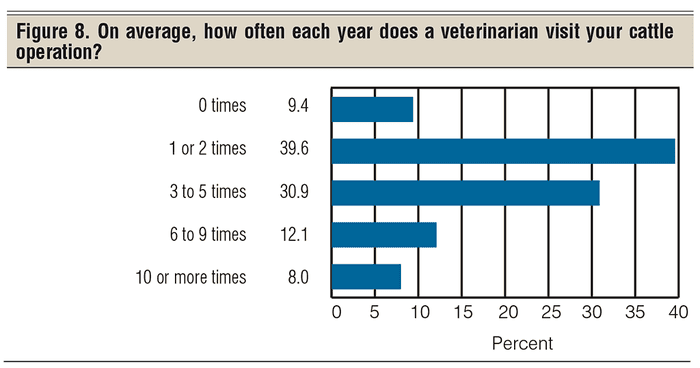
Producers who see their veterinarians several times a year tend to use them as consultants instead of mobile emergency rooms. When readers were asked if they usually develop an overall herd health plan with the advice of a veterinarian, 60.9% say yes while 39.1% say no (Figure 9).
Yet it appears that there is more a veterinarian can do in terms of consulting with an operation. When asked if readers have worked with a vet in developing a biosecurity plan for their operation, 10.6% say yes and 89.4% say no (Figure 10).
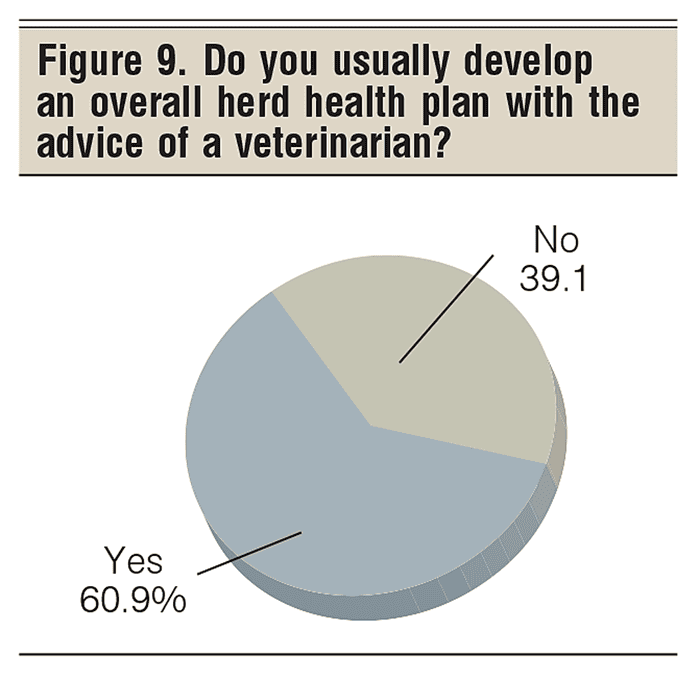
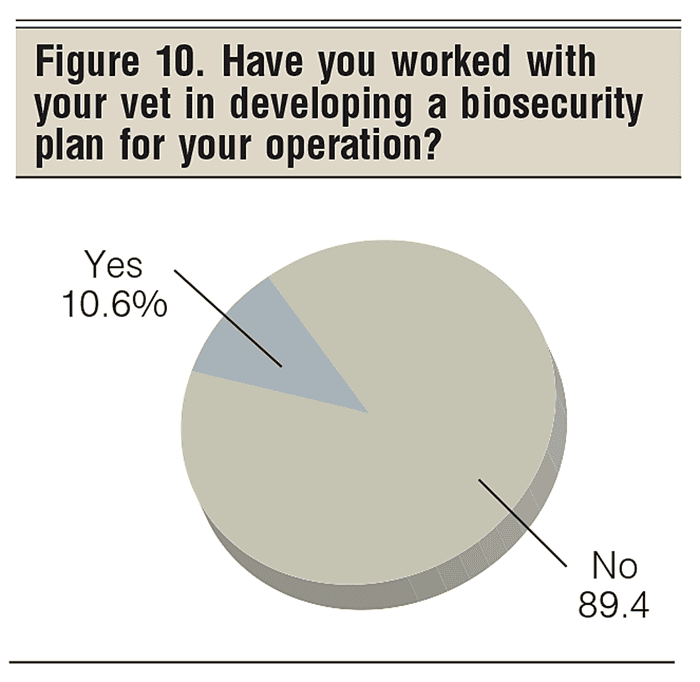
Of those readers who use their veterinarian to help develop a biosecurity plan, they include a wide range of practices to ensure they don’t buy a herd health wreck when they bring cattle onto their ranch. The top three biosecurity practices readers use are prompt disposal of dead animals, purchasing feed from reputable sources and vaccination (Figure 11).
In general, however, BEEF readers are satisfied with their veterinarian, with 58.6% checking that box on the survey. Another 21% are somewhat satisfied and 16.5% are satisfied. Proving that there will always be glitches in any relationship, 3.9% say they’re not satisfied (Figure 12).
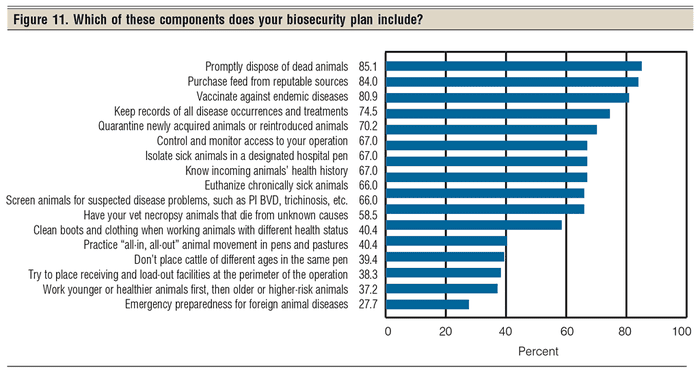
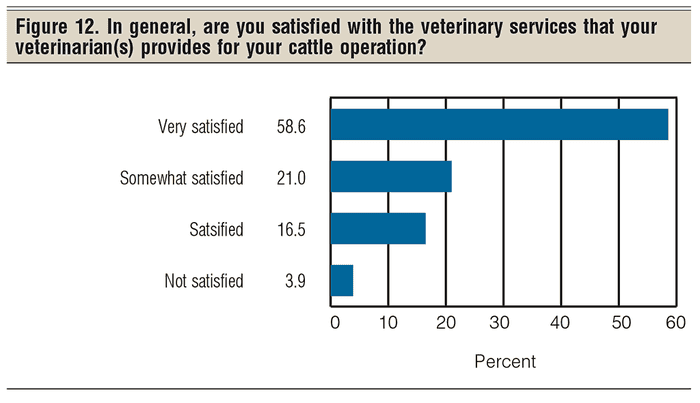
And then, while there is much that producers and veterinarians can agree on, there’s always room for discussion. When we asked producers how they think their veterinarians would rate their operation for ease, comfort and safety of the veterinary work performed there, 1.2% had to be honest with themselves and say poor. Beyond that, 32.9% say adequate, 48.8% say better than average and 17% say outstanding (Figure 13).
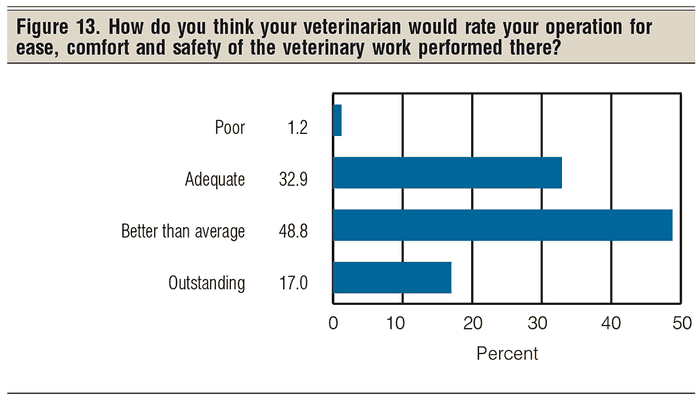
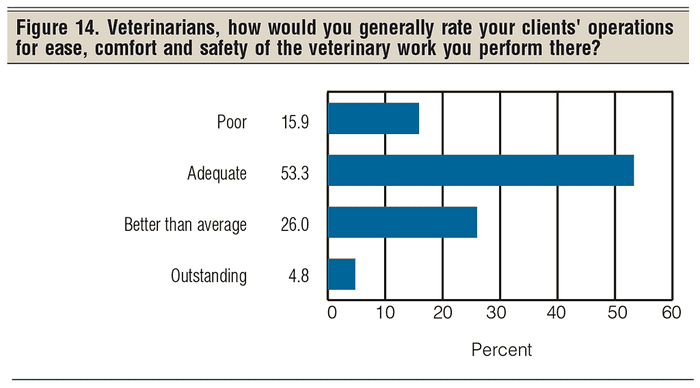
Do veterinarians agree? Nope. When we asked veterinarians the same question, the results were a little different. Of the veterinarians who responded, 15.9% rated their clients’ facilities as poor, 53.3% thought they were adequate, 26% say better than average and 4.8% say they’re outstanding (Figure 14).
So, if you run out of things to talk about in the sale barn café, ask your veterinarian what he or she thinks. Just be ready for the answer.
About the Author(s)
You May Also Like


.png?width=300&auto=webp&quality=80&disable=upscale)
